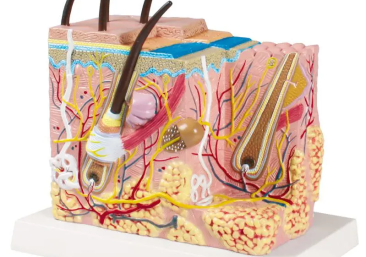Melanoma is a skin cancer which usually occurs on sun exposed areas. They can however occur in parts of the skin or body that have never been exposed to the sun.
Melanoma is the fourth most common cancer diagnosed in Australia, Melanoma is more common in men than women.
In 2014, 13,134 new cases of melanoma were diagnosed in Australia. In Australia in 2015, there were 1520 deaths due to melanoma.
Causes of Melanoma
Sunburn causes 95% of melanomas. In Australia, 1 in 8 adults and 1 in 5 teenagers are sunburnt on an average summer weekend. Often taking part in water sports and activities at the beach or a pool, as well gardening or having a barbeque. Sunburn is also common on cooler or overcast days. Sun exposure that doesn’t result in burning can still cause damage to skin cells and increase your risk of developing skin cancer. Evidence suggests that regular exposure to UV radiation year after year can also lead to skin cancer.
A tan is not a sign of good health. Tanning is a sign that you have been exposed to enough UV radiation (from the sun or solarium) to damage your skin. This will eventually cause loss of elasticity (wrinkles), sagging, discolouration and even brown patches to appear on your skin.
A tan increases your risk of skin cancer. A tan will offer only limited protection from sunburn, usually equivalent to SPF3, depending on your skin type. It does not protect from DNA damage, which can lead to skin cancer. Some people who use fake tans mistakenly believe it will provide them with protection.
Treatment may involve surgery, radiation, medication or in some cases, chemotherapy.
Symptoms of Melanoma
- Look for new spots or spots that change or grow including moles and freckles. Size, thickness and border.
- Watch for sores that don’t heal or heal then return and crusting or flaking.
- Be aware of spots or sores that change in sensation or are itchy, tender or painful.
- Check everywhere. Melanoma can develop in places that do not get sun exposure. This includes under your arms, the soles of your feet, buttocks, under nails and genital areas.
- Look for areas of concern when you shampoo, shower or apply lotion.
What are the risk factors for Melanoma?
Factors that may put you at increased risk for skin cancer:
- Factors that may put you at increased risk for skin cancer:
- Immunosuppression, typically due to taking immunosuppressive drugs
- Previous serious skin injuries, such as a major scar or burn
- History of actinic (solar) keratoses. These are precancerous lesions.
- Familial Atypical Multiple Mole Melanoma Syndrome (FAMMMS)
- Certain rare genetic disorders, including xeroderma pigmentosum and basal cell nevus syndrome
- Ultraviolet (UV) light exposure: Extensive lifetime sun exposure or occasional intense exposure, sunburn
- Tanning bed use
- Age: The longer you are exposed, the higher your risk of developing a skin cancer
- Having a fair complexion, blonde or red hair, freckles, blue eyes and/or a tendency to sunburn
- Having 50 or more moles
What Melanoma looks like?





